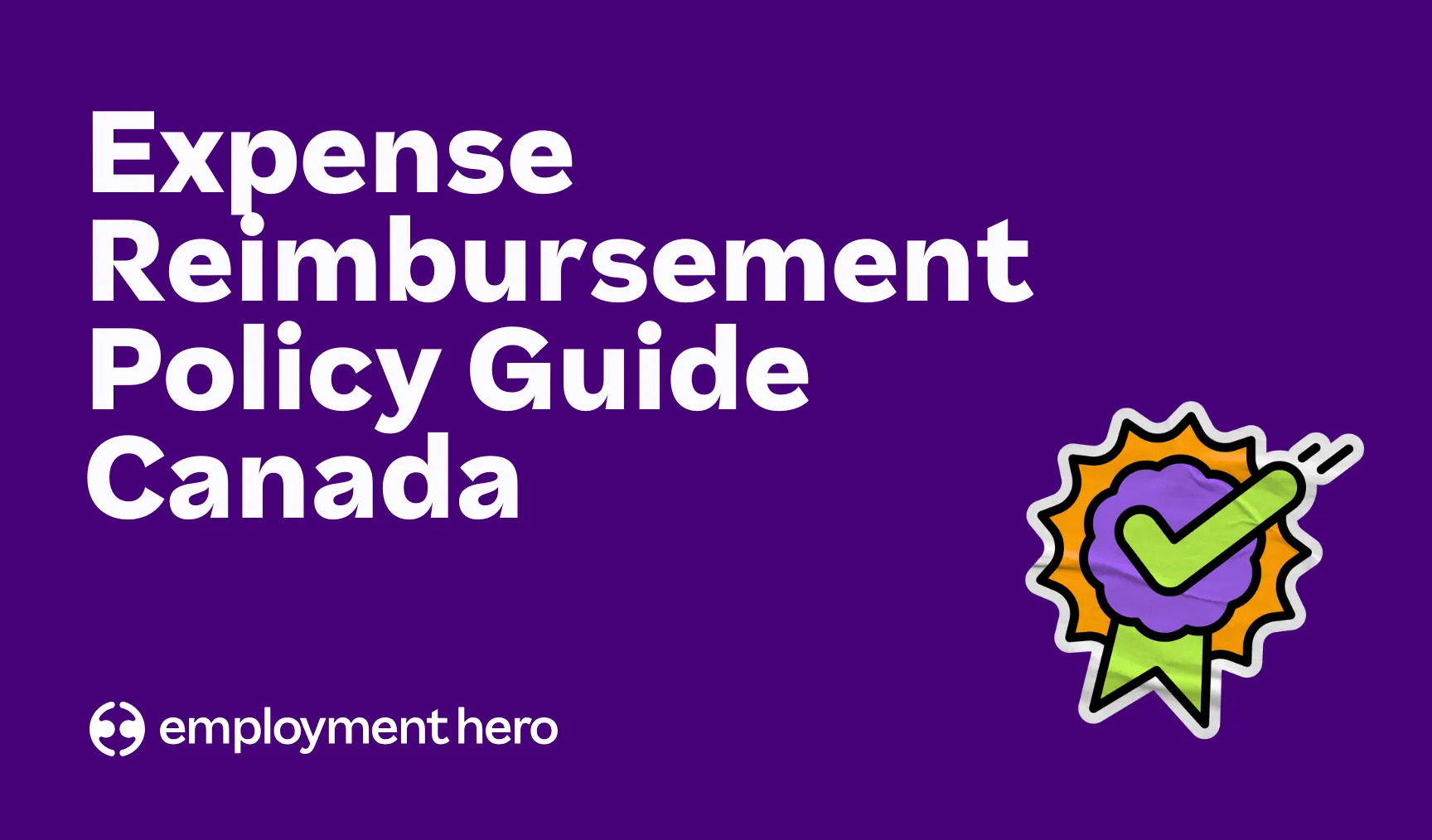The definitive employee offboarding checklist for Canadian employers
Published
The definitive employee offboarding checklist for Canadian employers
Published

Offboarding is the last impression you’ll ever make on an employee. When it’s done well, it protects your business, strengthens your culture and sends someone out into the world who will still speak well of you. When it’s rushed or neglected, you lose knowledge, invite risk and damage your reputation in ways you may never see.
In this guide, we’ll walk through the entire offboarding process — what to do, when to do it and why it matters — so you can protect your business and treat every departure with respect.
Before you start, take a look at our article on how to part ways well and download our termination of employment letter template to keep your process clear and compliant.
Still treating offboarding as an afterthought?
For a long time, offboarding was treated like paperwork. Someone quits, you collect their laptop and that’s it. But every exit is a moment of truth for your company. It’s when you find out how strong your culture, systems and communication really are.
Offboarding isn’t just the end of employment—it’s the final stage of the employee lifecycle. It deserves the same care and attention as hiring or onboarding. A clear, respectful exit process does three important things:
1. Protects your data and assets.
People leave with access to systems, files and knowledge. You need a structured way to lock those down.
2. Preserves what they know.
Departing employees carry context that’s hard to replace. Offboarding captures that knowledge before it walks out the door.
3. Strengthens your reputation.
How someone leaves says as much about your business as how they joined. A fair, organized exit builds trust inside and outside your company.
Think of offboarding as an investment in your future culture.
Why a great offboarding process is a non-negotiable
Every employer has stories of exits that went wrong: access left open, files missing, unpaid balances causing tension. These are preventable with a process that works every time.
1. Risk mitigation.
When someone leaves, your systems, data and property are exposed. A checklist ensures access is revoked, assets are returned and compliance tasks are closed out. It protects your business from security breaches, financial loss and legal headaches.
2. Knowledge transfer.
No one wants to rebuild processes from scratch because one person held all the know-how. A structured offboarding plan captures key workflows and project details so the rest of the team isn’t left guessing.
3. Brand reputation.
Former employees become part of your brand story. Treat them well and they become advocates, not critics. The way you handle exits shapes how future candidates, clients and even remaining employees see you.
Your step-by-step guide to a smooth employee exit

The best offboarding process feels calm and predictable. Here’s how to get there, phase by phase.
Phase 1: The immediate aftermath of a resignation
The first 24–48 hours set the tone. Acknowledge the resignation promptly and thank the employee for their contribution. Confirm their final working day in writing, based on notice period and any accrued vacation.
Next, trigger your offboarding workflow. HR, IT and payroll should each have clear roles. A shared checklist or project ticket keeps everyone aligned.
Communicate early. Agree with the manager on what to tell the team and when. Be open and professional—avoid speculation. If the departure affects clients or vendors, plan how those updates will be delivered to them, too.
Phase 2: The knowledge transfer and work transition
This is where value is either saved or lost. Sit down with the employee and manager to list all active tasks, deadlines and responsibilities. Identify who will take each one over and when.
Ask the departing employee to document key processes, contacts and known risks. This doesn’t need to be perfect—practical notes and quick walkthroughs often work better than formal manuals.
Where possible, schedule shadowing sessions so the successor can see tasks performed in real time. End each session with a reverse shadow, where the departing employee observes and gives feedback.
Don’t forget relationships. Introduce replacements to key clients or partners before the last day. Continuity is as much about trust as it is about tasks.
Phase 3: Navigating the administrative and legal requirements
Canadian offboarding has a compliance backbone. Missing even one item can create problems later.
- Final pay. Issue the final paycheque on the correct schedule, including any overtime, unpaid bonuses and accrued vacation pay based on provincial rules.
- Record of Employment (ROE). Submit an ROE through ROE Web when there’s an interruption of earnings. Accuracy matters—double-check the reason code and dates.
- Benefits and pensions. Notify employees of benefit end dates, continuation options and what happens with pension or RRSP contributions.
- Provincial obligations. Some provinces require extra documentation or notice payments. Review local employment standards before you finalize the exit.
- Post-employment clauses. Reiterate confidentiality and intellectual property agreements. Provide copies and explain any continuing obligations.
Good documentation protects both you and the employee. Keep it simple and transparent.
Phase 4: Securing your assets and data
This phase keeps your business safe. Coordinate with IT to remove access to all systems—email, shared drives, HR software, finance tools and customer databases. Reassign ownership of shared documents and calendars.
Collect company property: laptops, phones, ID cards, keys and credit cards. Check them off against a list and note the condition.
Once access is revoked, run a quick audit to confirm there are no stray logins or forgotten devices. This final check avoids data leaks and compliance issues.
Phase 5: The last day experience
How you handle the final day says everything about your culture.
Plan the logistics so the day feels organized, not awkward. Set time for the last tasks, an exit interview and a chance for the team to say goodbye. Have a clear process for handing back assets and confirming final details.
Make it personal. A short thank-you note from the manager or CEO goes a long way. A farewell message on the team chat, lunch, or a small gesture of appreciation helps end things on a positive note.
Provide clarity on what happens next—when they’ll receive final pay, how to access tax slips and who to contact for questions. People leave with confidence when they know the details are handled.
The exit interview: Your greatest source of honest feedback
An exit interview is one of the few times you’ll hear the unfiltered truth. If onboarding shows how you attract talent, the exit interview shows how you keep it.
Treat it like a conversation, not a formality. Set the tone by explaining that feedback is confidential and genuinely valued. Choose a neutral HR representative rather than the direct manager to keep it comfortable.
What are the best questions to ask in an exit interview?
Go beyond the basics. Ask questions that help you see patterns in your culture and management practices.
- What prompted you to start looking for a new role?
- What could we have done differently to make you stay?
- Which parts of your job felt most rewarding?
- Where did you feel stuck or unsupported?
- How would you describe the company culture to a friend?
- Did you have what you needed to do your best work?
- Would you consider coming back one day?
Keep it conversational and let silence do some work—people often reveal the most after a pause.
How to get feedback you can actually use
Focus on listening, not defending. Ask for examples and patterns. Summarize what you’ve heard at the end and thank the employee for being honest.
Later, combine insights from several interviews and look for recurring themes. Share those trends with leadership and decide what to act on. When employees see that feedback leads to change, they’re more likely to be candid in the future.
Offboarding roles and responsibilities: Who does what?

Clear ownership keeps the process smooth. Here’s how responsibilities should usually break down:
HR
- Coordinate the full offboarding workflow
- Confirm final pay and ROE details with payroll
- Conduct the exit interview
- Provide written documentation and letters as needed
- Store records securely
Direct Manager
- Lead knowledge transfer and work redistribution
- Communicate the departure to the team
- Approve timesheets and outstanding expenses
- Manage client handovers and maintain morale
IT
- Remove system access and update permissions
- Collect and audit all company devices
- Transfer file ownership and redirect emails
Automating this workflow saves time and ensures nothing slips through. Tools like Employment Hero’s HR software can automatically assign tasks to HR, managers and IT so you never miss a step.
Handling terminations with clarity and care
Terminations are one of the hardest parts of leading a business. They test your professionalism, empathy and understanding of the law all at once. Whether the decision is performance-based, restructuring-related or due to misconduct, how you handle it shapes trust across your entire workplace.
Lead with preparation
Before any termination meeting, review the employee’s file, performance records and the relevant employment standards for their province. Have final pay, documentation and access removals ready. Surprises or uncertainty only make a difficult conversation harder.
Be direct, not harsh
Deliver the news clearly and calmly. Avoid long justifications or blame. Most people remember how they were told far longer than why. Keep the conversation brief, compassionate and private.
Follow compliance, not convenience
Every province sets its own rules for notice, pay in lieu and termination documentation. Confirm the details before you act. When in doubt, refer to your legal counsel or HR software to ensure your timing and calculations align with local law.
Close with dignity
After the conversation, guide the employee through the next steps: pay, benefits and references, if applicable. Ensure they leave understanding what happens next and that they’ve been treated fairly.
Handled the right way, a termination doesn’t destroy trust. It reinforces that your organization holds itself to a higher standard, even when the news is hard to give.
Voluntary vs. involuntary termination: How does offboarding change?
Every exit deserves professionalism, but the approach depends on how the departure happens.
Voluntary resignations allow more planning time. You can focus on handovers, knowledge transfer and a positive farewell. Communication can be transparent once the employee agrees to share their news.
Involuntary terminations or layoffs require immediate attention to security and legal compliance. Revoke access and collect company property as soon as the decision is communicated. Keep discussions respectful and brief. Provide written documentation, including a termination of employment letter that explains pay, benefits and next steps.
For employees still in their probationary period, review our guide to termination during probation for the correct process in each province.
Whatever the reason, treat people with dignity. Consistency and fairness protect both sides.
Download the only employee offboarding checklist you’ll ever need
Every exit is a test of your organization’s maturity. Without a process, you risk compliance issues, lost data or frustrated former employees. With one, you create a smooth, professional experience that protects your business and your people.
Our free downloadable checklist helps Canadian employers manage every step—from resignation to final payroll—with confidence. It includes timelines, task owners and compliance reminders you can reuse for every departure.
Download the employee offboarding checklist and take control of this critical stage of the employee lifecycle.
To download the checklist, we just need a few quick details.
Related Resources
-
 Read more: Expense Reimbursement Policy Guide Canada
Read more: Expense Reimbursement Policy Guide CanadaExpense Reimbursement Policy Guide Canada
Download a free expense reimbursement policy guide for Canadian businesses. Learn how to create a clear, compliant policy for managing…
-
 Read more: The professional development plan Canada’s top teams use
Read more: The professional development plan Canada’s top teams useThe professional development plan Canada’s top teams use
Download a free professional development plan template for Canadian businesses. Help employees set goals, track progress and achieve career growth.
-
 Read more: HR Managers: Don’t just survive the festive season, master it
Read more: HR Managers: Don’t just survive the festive season, master itHR Managers: Don’t just survive the festive season, master it
Make year-end easier: manage time-off, payroll, parties and shutdowns with confidence. Get practical tips for Canadian SMBs. Download the free…


















